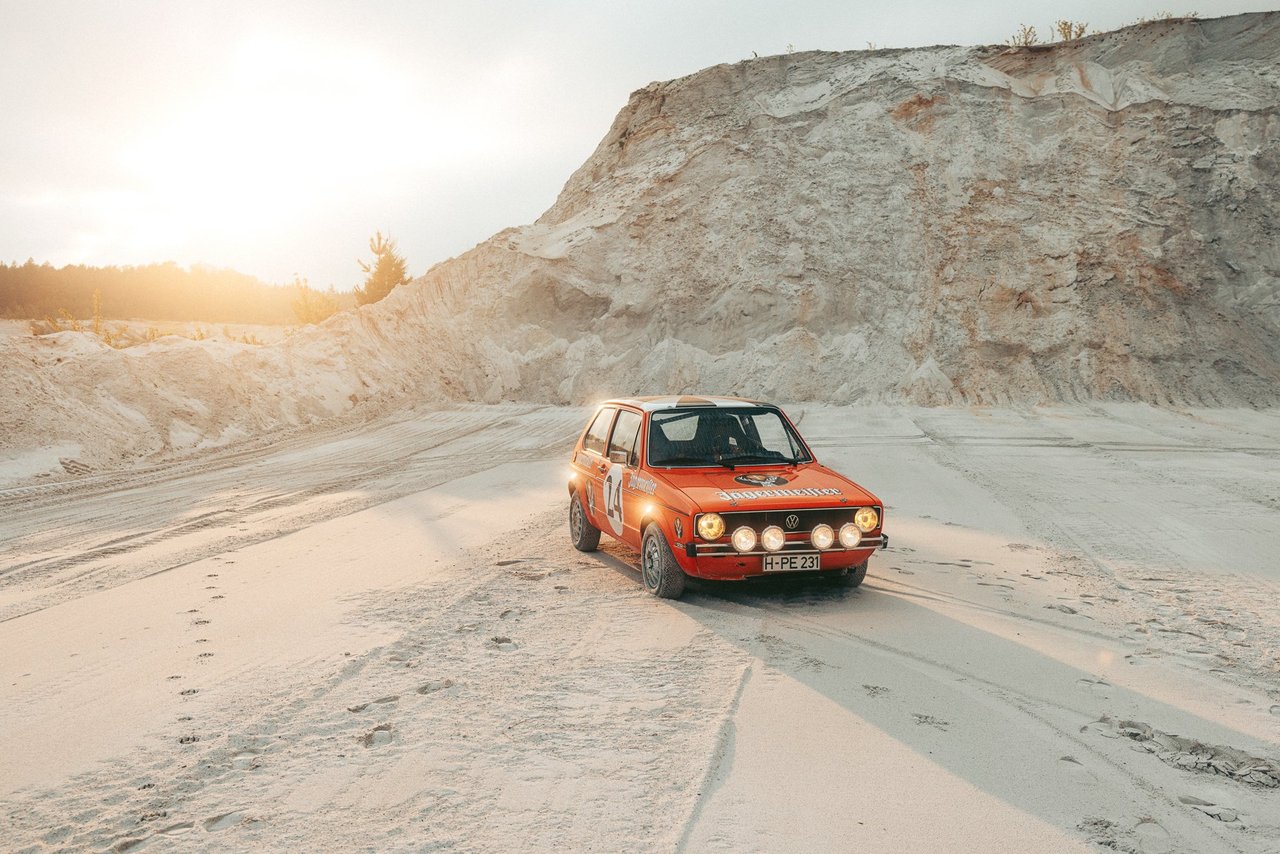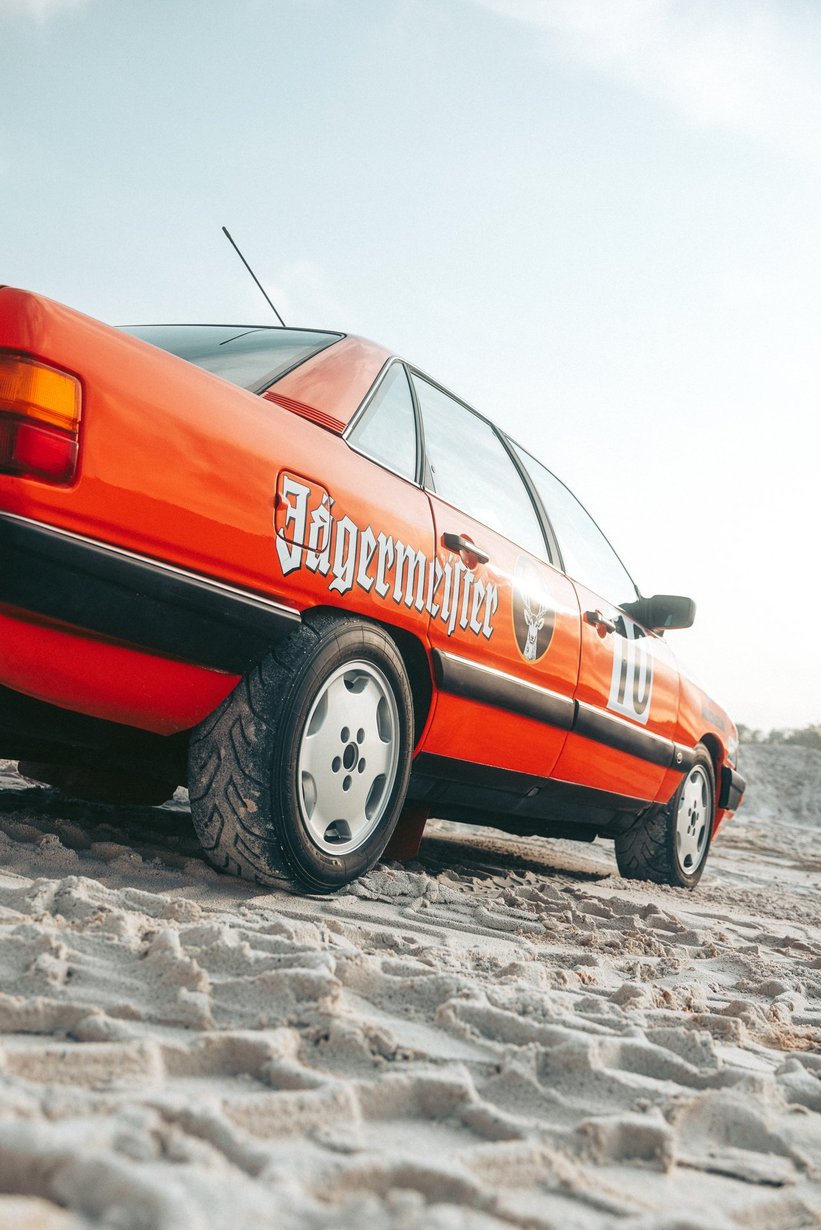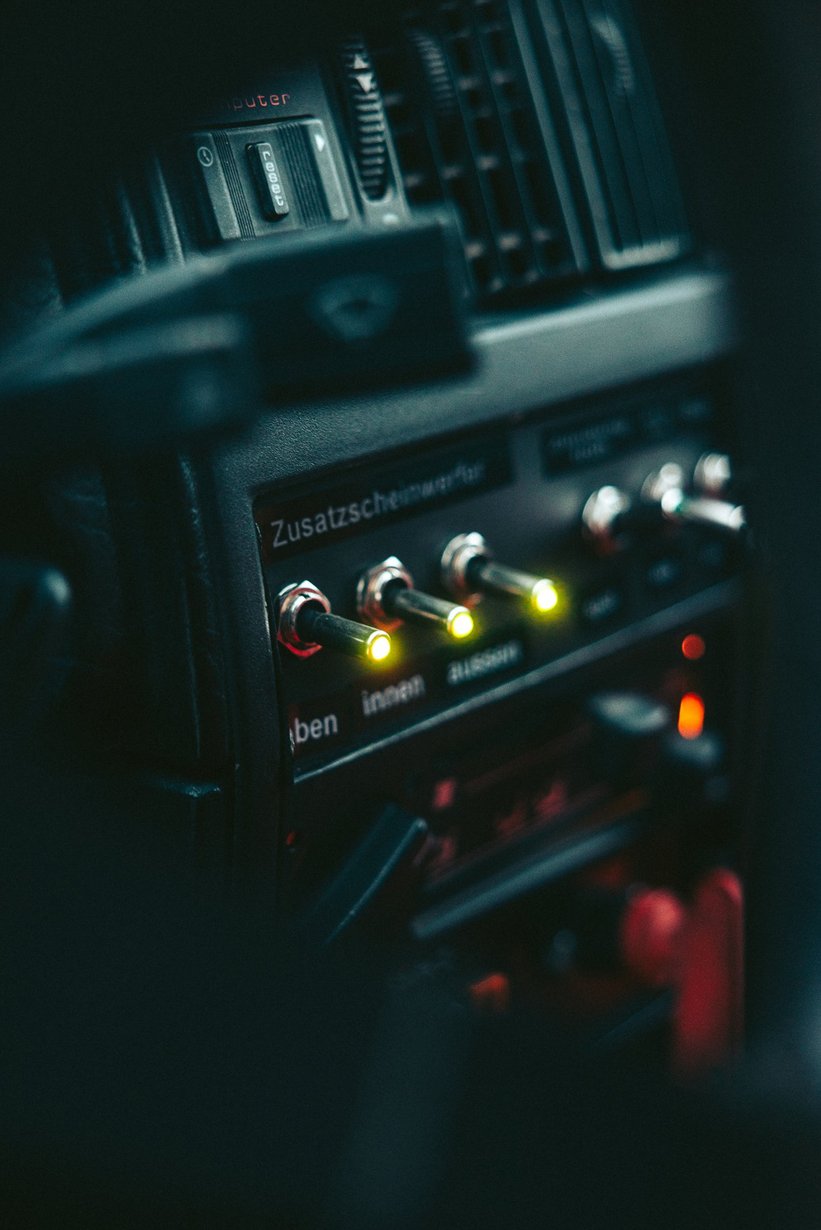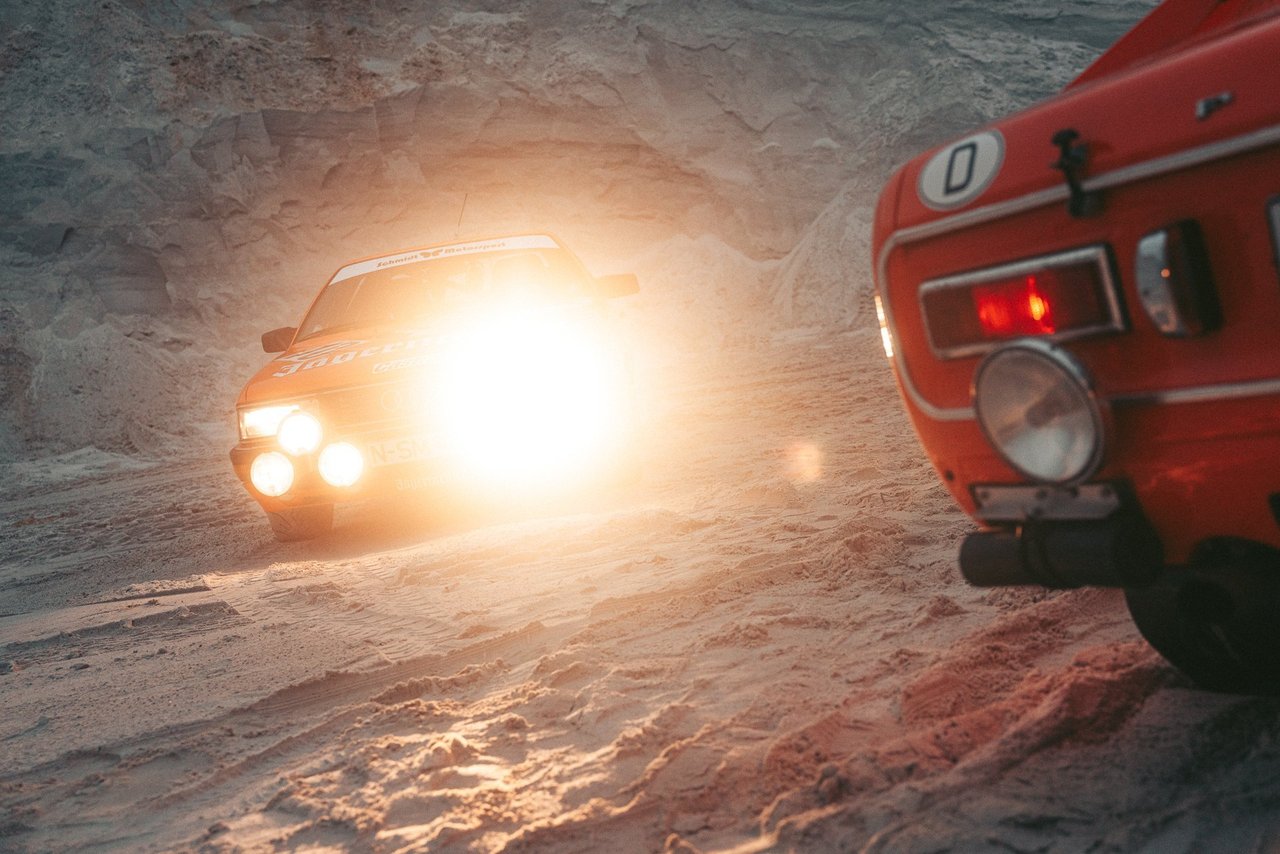

Group-5 and Group C, big spoilers and splitters, as well as ground effect-inducing low ride height won’t work in this environment. A high-revving DTM Alfa Romeo 155 would maybe make it 3 meters before getting stuck in the soft, white, loose surface, even with its four-wheel-drive system. We are in a sand pit just outside of Wolfenbüttel, where Mast-Jägermeister HQ is located, with three cars that some might think are an unexpected addition to a well-known bunch of orange racers. But modest looking as they may be, that doesn’t mean that they weren’t a big part of the brand’s motorsport heritage.
In the 1970s, 80s and 90s, motorsport sponsorship was a bit different to what we are accustomed to nowadays. For most of the 30 years that it existed, Jägermeister Racing had not been attached to one team or just one racing discipline, or class. As a clever PR exercise - invented by cousins Günter Mast and Eckhard Schimpf - to maximise its impact, it had to split its modest budget between as many people and teams as possible, often entering only a specific car into one specific race, with a famous driver at the wheel or an unknown privateer. The idea being - be seen everywhere (albeit mostly in Germany) and make it look like the budget is much bigger than it is. On top of that there were also Ecki’s personal racing and rallying ambitions to consider - as the deal he made with Günter was clear. Ecki runs the team for free, but can also race and rally the cars if he wants to and when he wants to. Enter the Capri, Golf and Audi, stage left.

VW Golf
With hindsight, the idea to take the granddaddy of all the hot hatches rallying is a true no-brainer. However, this particular VW Golf is not in fact a GTI, but a converted 1975 “L” version of the model. Built by the factory a full year before they had the brilliant idea of spicing up the “peoples car” and turning it into an adrenaline-inducing machine sold in showrooms all around the world. It has a 1,471 cc engine developing roughly 85 hp at 5800 rpm. This might not sound like much, but as the car weighs only 865 kg it’s not exactly slow either, with a power to weight ratio of 10.2 kg/hp.


Add to this a roll cage, some Recaro buckets and a big sheet of metal to protect the under tray, as well as heavy duty shocks, and you have yourself a rally car in the purest sense. In this particular livery, with the fantastic black and white “rays” painted on the roof it was driven in the German Rally Championship by Swedish-German rally legend Freddy Kottulinsky with co-driver Fritz Lochmann and teammates “Jochi” Kleint and Güther Dederichs. Talk about trend-setting conversions of an iconic car…


Ford Capri
A few years earlier the stage for Jochi Kleint's and Ecki Schimpf’s other rallying exploits was set during the in 1973 Monte Carlo Rally. When some much more powerful and fast (with 230 hp on tap, 900 kg of kerb weight), really stylish, rear-wheel driven 2600, V6 Capri RS’s became their weapons of choice. Two specific examples that had already enjoyed considerable success the previous year with Walter Röhrl at the wheel, when he won the Olympia Rally in the exact same car you see in the pictures today.
Unfortunately, the story did not end well. Both Jägermeister Capris got disqualified in a controversial decision by the organisers, which excluded 160 vehicles from the competition. These were cars which they (the Automobile Club de Monaco) just simply couldn’t be bothered to time on one the Burzet-Burzet stage, after a massive accident followed by a snowstorm occurred. Apparently, the stewards just wanted to call it a day, so they kicked 75% of the competitors off the rally. This resulted in a blockade of the “Monte” by the disqualified teams, which ended the rally in a massive scandal.

Audi 200 Quattro
More than a decade later, in 1987, Jägermeister deployed the four-wheel-drive Audi 200 Quattro in the German Rally Championship with Freddy Kottulinsky’s daughter - Susanne - at the wheel. Coached by the legendary Walter Röhrl, Susanne drove fearlessly, often finishing top ten overall in this bulky, orange monster. This Group-A classified car’s engine makes around 240 hp (6000 rpm) and 330 NM of torque (4000 rpm). Unfortunately, as a weapon it’s one that’s also quite cumbersome to handle, weighing in at 1250 kg. So, it wasn’t the most competitive car out there, but still gave the brand decent exposure especially with a young girl at the wheel.


It also might not look as exciting as a Group B Sport Quattro, but it is in fact a fully modified rally car. Although for some weird reason the rear bench was kept in its entirety - the roll cage just goes straight through the seats - making it a kind-of fully functional school-run, rally sedan. Provided your kids wear their helmets, of course. And then there is the noise of its 5-cylinders, which is truly intoxicating.


Rennmeister at Ultrace
Fast forward to 2023 and all three ‘retired’ rally cars make their way with relative ease onto the sandy set in a cacophony of the most wonderful sound coming from their completely free flowing exhausts. Photographer Keno Zache and Videographer Oskar Łęczycki get to work, shooting stills and videos for the CD Works created, nightlife inspired, Instagram-based brand - Rennmeister. All this as a preview for Ultrace’23. A 50 000 spectator and 1000 car show, held between the 10th and 11th of June in Wrocław Poland, during which Rennmeister will have a massive presence, displaying some of Jägermeister racing’s most iconic racing cars… and maybe… also one of these rally legends.

So, if you’re not at Le Mans on this particular weekend and love cars, Ultrace is definitely the place to be. It brings contemporary youth culture and car culture together. And each year displays more and more interest in historical motorsport, which is as a matter of fact, the inspiring factor for most cars converted for the show and concours held there. It also broads the automotive context by adding tropes incorporated from the art and fashion world landscape, making it a true breath of fresh air on the international car scene.
If you happen to be there and want to come by, say hello and collect some free Rennmeister merch, as well as win a recreation of a Group-5 e21 BMW 320 racing car in a raffle, one just like the one shown by the Rennmeister project last year, you simply must be there, or be square!
Photos: Keno Zache
























































